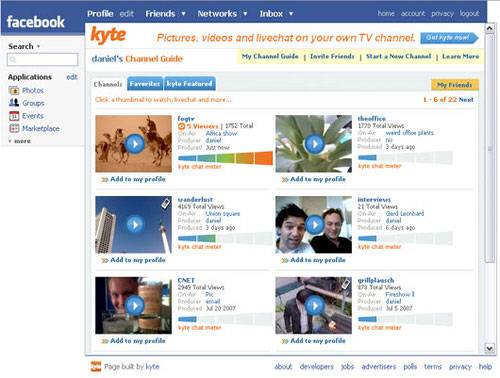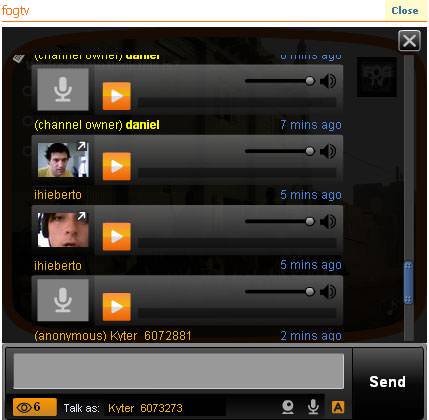When Kyte launched in April, I called it “Twitter that moves” — which I think is still a fair comparison. Since it is online video week here at Read/WriteWeb, it seemed like a good time to revisit Kyte and try to get a better grasp on what they’re all about. Last week I caught up with Daniel Graf, founder and CEO of Kyte, who chatted with me about what this exciting start up is doing and where they’re headed.

Kyte now has over 8,000 channels, and has produced 50-60,000 shows resulting in millions of views since its April beta launch. The San Francisco based company, which employs 25 people, launched a Facebook application in mid June that really exhibits what Kyte is about.

When I compared Kyte to Twitter, I was mostly thinking about Kyte’s content creation tools, which allow users to put up video, audio, and photo content from anywhere via the website, email, or supported mobile phones to create a single life stream. In that way, Kyte acts a lot like Twitter. However, during my chat with Daniel Graf, there was one thing he really wanted to stress: Unlike Twitter, Kyte is not aiming to be a destination. Kyte is creating what Graf terms an “uber network” of embeddable channels. Content creators and their fans can embed Kyte content streams anywhere. The Facebook app is a good example of how Kyte acts as an enabler that lets anyone create content, interact with viewers (you can even set up a channel that viewers can contribute shows to), and spread it virally.
The channel embedded below is from one of Kyte’s most popular users, Robert Scoble, who had over 200 viewers on his channel when he broadcast live from an iPhone line in June:
What impressed me most about Kyte was just how many ways you can get content into the system, and how instant it all is. While I was talking to Graf, he added content to his Kyte channel via mobile phone, web cam, and email. Even he was surprised by how fast Kyte strung together a slideshow from photos I emailed to their test channel. Almost instantly after I had sent my email, the show appeared on the Kyte channel and moments after that someone had posted a response in the chat room that comes with each channel. The chat supports text, audio, and video responses, so interacting with your viewers on Kyte is as dynamic as the content itself.

One of the neatest uses of Kyte that Graf showed me was by the band “The Residents,” who have set up two channels on their website and air them side by side. On the left side is a band channel that the group updates daily with video blogs, on the right side is a fan channel that any fan can contribute to via email. The band also embeds their channel on their MySpace page, letting their users access their content any way they want.
Conclusion
Kyte took a $2.25 million series A venture financing round in July and received funding from Nokia in June, but Graf told me that the company is focused on building out its infrastructure and services. They just opened a offices in Europe to expand into that market, and they are planning to add support for more mobile phones in the coming months (though content can be added from nearly any phone via email).
While Kyte is still a product I personally am not likely to become an avid user of, I certainly see the appeal. Robert Scoble uses Kyte to create daily video blogs that are usually just stream of consciousness responses to things he’s read or seen. The service is exquisitely suited to that because he can record and submit video whenever the muse strikes him using his phone, webcam, or email regardless of where he is. By allowing people to embed the channel, Kyte is spreading not only the Kyte brand, but letting users like Scoble spread their brands as well. Also, notice that I said channel, and not video. When Robert updates his channel, the embedded widget will be fed with the new content, which is really what sets Kyte apart from YouTube as a video blogging platform — these are actual channels, not just single entry blogs.

















